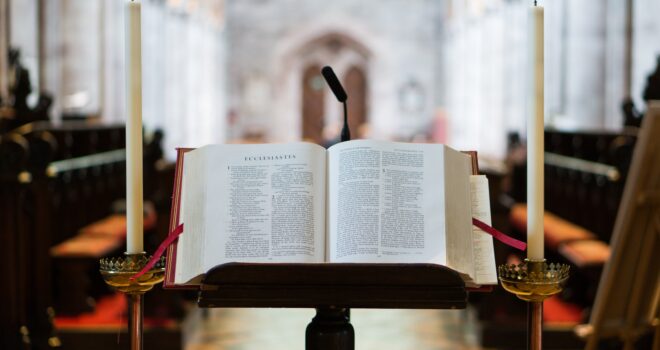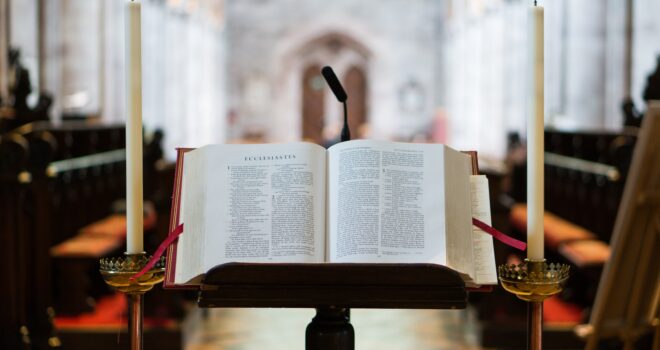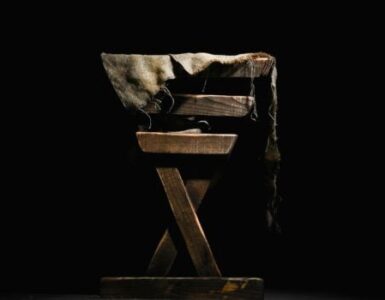A Review of Christianity Is Credible
By Louis-Matie De Blignieres, FSVF
Translated by Thomas Crean, OP
Arouca Press, 2022
“This book is, unashamedly, a work of apologetics.” So states the author of Christianity Is Credible in its opening sentence. For the uninitiated and for all those outside any form of Christian faith tradition, apologetics is the field of inquiry and study that presents the evidence and defense of the truths of Christianity.
Apologetics is an endeavor that implicitly demonstrates the need and necessity for evidence for any belief or belief system. Given the sheer scale and substance of the truth claims of Christianity, it is necessary and inherent to the explanation and the justification of its many truths.
Apologetics embodies the rational necessity for evidence about God’s existence and nature and the facts that compel belief in the Christian God. And, apologetics provides the explanatory and evidentiary case for the Christian belief in God’s Incarnation in space and time in the person of Jesus Christ and His message and mission to mankind. A tall order indeed. But, a necessary and essential one.
For such foundational and far-reaching assertions require real and rigorous evidence. For if the truth claims of Christianity are actually and factually true, Christianity is truly “the” truth, not merely “a” truth. It is the answer to our modern doubts and skepticism, to our modern science and its manifest materialism. And it is the antidote to our modern relativism and the principle and primacy of personal perception.
For apologetics offers a rational defense of God’s factual existence and His actual nature, as well as what the real purpose of life and living is, including what is truly meaningful and virtuous, beautiful and loving. In short, apologetics addresses questions about God’s existence and His nature by employing the logical order and rational certainty that underpins all mathematics and science. Apologetics explains and defends the truths of Christianity in the light of our natural reason and the laws of logic.
In a sense, apologetics is a form of rational and logical proof. For such apologetic truths establish philosophical facts, facts as certain as mathematical and scientific facts. And, it is just here that the very essence of apologetics and its assertion of the need for evidence is in fact evidence of an intangible order and the rational imperative. For the first evidence for God, His existence and His nature can be seen in the essential logical demand for evidence. For the need and necessity for evidence is, in fact, evidence of God’s very existence and of His nature, and His mind.
Again, the need for evidence is evidence. For evidence precedes belief and reason’s rules and requirements must be explained, just as their rigor and power do. And such intangible and inherent laws of logic, such ubiquitous and practical rules of reason, such mathematical and scientific certainties can only be explained if there is a God.
For an inherent and integral intangible order such as this must be explained. And, such intangible order must come from an intangible order-er. For such intangible rational order and its universality requires a source, a cause for its existence and its power that is ubiquitously evident in logic, in mathematics, in science, in engineering, in medicine, and in technology of all sorts. And, God is the maker, the order-er of this intangible order that makes science possible.
But, it is right here that many modern minds check out. For many moderns believe that the only knowable facts about life and living are scientific facts. To them, unless a truth claim can be tested physically, empirically, scientifically, it is remanded to the realms of personal opinion.
This is why debates about God, His existence and His nature are so often cast as a clash between science and faith, rather than what they really are – a question of knowing and how we can know anything. How we can know scientifically and philosophically, rationally and religiously. For the core question and problem of our modern world is all about how we can know, what we can truly know and the degree to which we can really and truly know.
In Christianity is Credible the author’s primary evidence is historical. It is found in the sacred texts of Scripture, most particularly the Gospels and in these and other documented eyewitnesses “who enjoy sufficient marks of credibility.” He also stresses the importance of meeting reasonable objections to the Faith and questions about it with a rational apologetic grounded in reason.
Exploring rationally rigorous questions about God grounds the discussion and the case for Christianity’s credibility in the clear light of reason and avoids the polemics of personal perception and appeals to faith alone. Beginning with natural reason also delays appeals to God’s revelation until preliminary questions of His existence and nature can be answered in a broad and basic sense. For most apologists, rational proof precedes appeals to revelation and sacred texts as those two ideas implicitly assume the existence of God.
The author’s case follows this rational line of argument, though his apologetic case begins downstream from core questions of God’s existence, as his focus and his primary purpose places questions of Jesus’ divinity and His messianic message and mission as his book’s core concern.
To this end, Christianity is Credible addresses six crucial questions beginning with “Are the Gospels Historically Reliable?” This opening chapter “seeks to show … that the fact of supernatural revelation is attested by reliable sources.” Here the questions of historicity and reliability are raised and explored.
The Gospels’ inherent claim is to history, as they are asserted to be recorded accounts situated in specific spaces and times corroborated by eyewitnesses. As such the sum and substance of the Gospels are historical texts with profound religious implications and meaning of a factual nature documenting the life and teachings, the message and mission of Jesus of Nazareth.
Having established the accuracy and reliability of the Gospels and their historical documentation, the author’s second chapter examines the next natural question, “Is Jesus the Messiah foretold by the Prophets?” Here evidence is presented regarding the very idea of a “messiah” and its prophetic origins. Here too the rational nature and logical sequence of apologeticsis explicitly evident as the author moves from defining “prophecy” to its probative and pedagogical value, before directing attention to the idea and nature of the anticipated Messiah.
The remaining four chapters and their respective questions exhibits the rational progression of the author’s case and the implicit necessity for sufficient and compelling evidence to justify and warrant belief. Following the chapter about the Messiah, the next chapter addresses the question “Do the Miracles of Christ Prove His Divinity.” Here the argument shifts from the promised Messiah to His divinity, a necessary next question, as well as a logical and a crucial question.
For here the argument moves from the historicity of the Gospel accounts and the nature of prophecy and its messianic content to the idea of the Incarnation, the idea that God came and dwelt among us. For the recorded miracles and those alluded to in the Gospels were startling in their immediacy, their public settings, their practical and personal nature, and their testimony to the divinity of this Jesus of Nazareth.
As with the three concluding chapters, core questions about the excellence of Christian doctrine, the resurrection of Christ and Jesus’ self-description are explored and essential evidence is provided with adequate references for the more ambitious or skeptical reader. Again, notice the rational order and sequencing of the author’s apologetic case as it progresses from historical texts and the nature of prophecy and miracles, through doctrine, the resurrection and the assertions of Jesus Himself.
The author raises crucial questions and provides thorough evidence given his stated purpose and his implicit assumptions about his anticipated audience. His apologetic approach embodies its grounding in reason and evidence, though all this remains implicit in his case. Yet, for the lazy, lax or lost Catholic or Christian, this book provides a clear and sufficient presentation of the truth of Christianity and an essential summary of crucial evidence to the rational questions posed by the author.
On the other hand, the author enters too far downstream from preliminary core questions of God’s existence and nature, as well as the nature of reality, to address core issues necessary for persuasion and eventual evangelism. This deficiency could be remedied with a brief introduction to apologetics and an opening chapter summarizing and referencing these basic philosophical questions about God and knowing and the veracity of these core conclusions.
From the standpoint of primary principles and questions, given the nature of our modern world, its universal skeptical secular convictions and its myopic scientific distortions and epistemological errors, the author blunts his effectiveness and misses a real opportunity to persuasively prove the truth in its fullness to the convicted atheist or the confused agnostic.
The author’s clarity and concern for the veracity of the content of this book is consistent, cogent, and coherent. Yet, these emphases are not balanced with an awareness of the reader’s progress and reactions to the content as he presents it. Along this line of criticism, persuasive and encouraging, enthusiastic and inspirational notes judiciously employed would allow for an effective blending of rational rigor and inspiring and enthusiastic rhetoric arising from the very nature of these truths.
Within these criticisms, Christianity is Credible is a work whose most natural audiences are those whose confusions or convictions center on the questions explicitly addressed in its table of contents. Yet, this book could have a wider audience and a greater appeal, if the preliminary apologetic questions were initially addressed in a summary, introductory fashion.
Similarly, if the tone was more mindful of its readers’ reactions to the case as it develops and more inspiring and emotional in keeping with the discovery of the truths it conveys, the reach and response of its audience could be enhanced. Given these two criticisms, perhaps a second edition should be considered.
✠
Christianity is Credible is available from Arouca Press.













